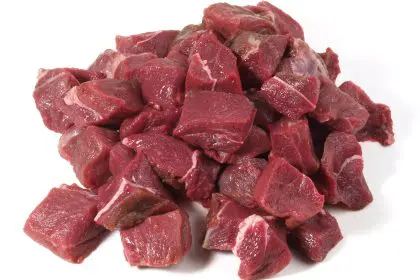For centuries, cultures worldwide have valued spicy foods for their distinctive flavors and purported health benefits. Modern research increasingly validates traditional wisdom, revealing that the compounds creating culinary heat offer significant metabolic enhancement and anti-inflammatory effects. Understanding how these fiery substances influence bodily systems provides insight into their potential role in health maintenance and disease prevention.
The science behind spice-induced metabolic activation
Spicy foods contain various bioactive compounds, with capsaicin—found primarily in chili peppers—being the most extensively studied. This potent compound interacts with specific receptors throughout the body, triggering responses that influence energy expenditure and fat metabolism. Upon consumption, capsaicin activates the transient receptor potential vanilloid-1 (TRPV1) channel, a protein found throughout the nervous system that detects and regulates body temperature.
When capsaicin binds to these receptors, it creates the sensation of heat that characterizes spicy foods. The body responds to this perceived temperature increase by activating cooling mechanisms, including increased sweating and vasodilation. This process requires energy, temporarily boosting metabolic rate through a mechanism called thermogenesis. Research indicates that consuming capsaicin-rich foods can increase energy expenditure by approximately 50 calories per day when included regularly in the diet.
Beyond immediate calorie burning, capsaicin appears to influence fat metabolism directly. Studies demonstrate that this compound enhances the activity of brown adipose tissue—specialized fat cells that burn energy to produce heat rather than storing it. Unlike white fat, which primarily warehouses excess calories, brown fat actively consumes energy when stimulated. The capsaicin-induced activation of brown fat represents a promising pathway for enhancing metabolism beyond simple calorie burning.
Capsaicin also appears to influence fat oxidation—the process by which stored fat breaks down for energy use. Research shows increased fat oxidation rates following meals containing capsaicin compared to identical meals without the compound. This enhanced fat utilization potentially supports weight management efforts by improving the body’s efficiency at using stored fat for fuel rather than relying primarily on carbohydrates.
The metabolic benefits extend beyond capsaicin to other spicy compounds. Piperine, found in black pepper, demonstrates similar thermogenic properties while also enhancing nutrient absorption. Gingerols and shogaols from ginger stimulate metabolism through related mechanisms. The combination of these compounds in dishes incorporating multiple spices potentially creates synergistic effects exceeding those of any single spicy ingredient.
How spicy compounds combat inflammation throughout the body
Inflammation represents a natural immune response essential for healing, but when chronic, contributes to numerous health conditions including cardiovascular disease, diabetes, and arthritis. Spicy food compounds demonstrate remarkable anti-inflammatory effects through multiple pathways, offering potential protection against inflammation-driven diseases.
Capsaicin exhibits powerful anti-inflammatory action by inhibiting substance P, a neuropeptide involved in pain transmission and inflammatory signaling. By reducing substance P levels, capsaicin helps modulate the inflammatory cascade, potentially limiting excessive or prolonged inflammatory responses. This mechanism explains why topical capsaicin preparations effectively treat certain pain conditions, but the same benefit occurs with dietary consumption.
The antioxidant properties of spicy compounds contribute significantly to their anti-inflammatory effects. Free radicals—unstable molecules that damage cells and promote inflammation—face neutralization by the antioxidant components in chili peppers, ginger, turmeric, and other spices. This protective action helps prevent oxidative stress that would otherwise trigger and sustain inflammatory processes throughout the body.
Spicy compounds influence inflammatory signaling pathways at the molecular level. Research demonstrates that capsaicin inhibits the activation of nuclear factor kappa B (NF-κB), a protein complex that regulates the expression of pro-inflammatory genes. By suppressing this pathway, capsaicin helps control the production of inflammatory cytokines—signaling proteins that coordinate immune responses and can drive chronic inflammation when inappropriately activated.
The gut microbiome—the community of bacteria inhabiting the digestive tract—plays a crucial role in regulating inflammation throughout the body. Studies indicate that regular consumption of certain spicy compounds beneficially modifies gut bacteria composition, promoting anti-inflammatory bacterial species while reducing those associated with inflammatory processes. This microbiome modulation potentially creates systemic anti-inflammatory effects extending far beyond the digestive system.
For individuals with specific inflammatory conditions, different spicy compounds offer varying benefits. Curcumin from turmeric demonstrates particular efficacy for joint inflammation, while ginger compounds show promise for digestive inflammatory issues. Capsaicin appears broadly effective across multiple inflammation types, suggesting value in incorporating diverse spicy ingredients rather than focusing exclusively on chili peppers.
Digestive benefits that enhance nutrient processing
Contrary to popular misconceptions about spicy foods damaging the digestive system, research indicates numerous digestive benefits from moderate consumption. Spicy compounds stimulate digestive secretions including saliva, stomach acid, and digestive enzymes, potentially enhancing the breakdown and absorption of nutrients from meals.
Gastric emptying—the rate at which food leaves the stomach and enters the small intestine—receives modulation from capsaicin and related compounds. While intense spice can temporarily slow gastric emptying, creating a sense of fullness that supports portion control, regular consumption appears to normalize this process while maintaining enhanced digestive secretions. This combination supports efficient digestion without causing uncomfortable fullness.
The antimicrobial properties of many spicy compounds offer protection against pathogenic bacteria in the digestive tract. Research demonstrates that capsaicin, piperine, and various compounds from garlic and ginger effectively inhibit the growth of potentially harmful bacteria, including certain E. coli strains and H. pylori—bacteria associated with ulcers and gastric inflammation. This antimicrobial action supports a healthier digestive environment.
Intestinal motility—the contractions that move food through the digestive tract—benefits from moderate spice consumption. The stimulation of digestive activity helps prevent stagnation that could otherwise lead to constipation or bacterial overgrowth. This improved transit supports efficient nutrient extraction while reducing the risk of digestive discomfort from food remaining too long in any portion of the digestive tract.
For those experiencing certain digestive disorders, specific spicy compounds offer therapeutic potential. Ginger demonstrates effectiveness for nausea and digestive discomfort, while turmeric shows promise for inflammatory bowel conditions. Even capsaicin, despite its intensity, appears beneficial for certain digestive issues when consumed regularly in moderate amounts as the body adapts to its effects.
Cardiovascular protection through multiple mechanisms
Heart health benefits significantly from the regular inclusion of spicy foods through several distinct mechanisms. Research indicates that capsaicin and similar compounds help reduce blood cholesterol levels, particularly low-density lipoprotein (LDL) cholesterol associated with increased cardiovascular risk. This cholesterol-lowering effect appears to result from enhanced bile acid production and excretion, helping remove excess cholesterol from the body.
Blood pressure regulation improves with habitual consumption of certain spicy compounds. Capsaicin activates TRPV1 channels in blood vessels, promoting vasodilation and potentially reducing blood pressure in hypertensive individuals. Additionally, the anti-inflammatory effects of various spicy compounds help protect blood vessel lining from inflammatory damage that could otherwise contribute to hypertension development.
Platelet aggregation—the clumping of blood platelets that contributes to dangerous clot formation—faces inhibition from several spicy compounds. This anti-platelet effect resembles the action of low-dose aspirin, potentially reducing stroke and heart attack risk by preventing excessive clotting while maintaining normal hemostasis. The combination of this anti-platelet action with anti-inflammatory effects creates comprehensive cardiovascular protection.
Endothelial function—the health and responsiveness of blood vessel lining—improves with regular consumption of certain spicy compounds. Research demonstrates enhanced nitric oxide production and endothelial responsiveness following capsaicin consumption. This improvement supports proper blood vessel dilation and constriction, crucial for adapting to changing circulatory demands while maintaining healthy blood pressure.
For those concerned about heart health, incorporating diverse spicy ingredients provides complementary benefits. Chili peppers offer capsaicin’s direct cardiovascular effects, while garlic contributes additional benefits through allicin and related compounds. Turmeric provides curcumin’s potent anti-inflammatory action specifically beneficial for arterial health. This diversity creates more comprehensive protection than any single spicy ingredient alone.
Practical incorporation strategies for maximum benefit
Obtaining metabolic and anti-inflammatory benefits from spicy foods requires strategic incorporation that considers both effectiveness and individual tolerance. Starting with mild spices and gradually increasing intensity allows the body to adapt while minimizing digestive discomfort. This gradual approach helps develop both tolerance and appreciation for spicier flavors over time.
Combining spicy ingredients with healthy fats enhances the absorption of fat-soluble compounds including capsaicin and curcumin. Preparations that include olive oil, avocado, or coconut provide better bioavailability than water-based dishes. This improved absorption maximizes benefit from even moderate spice levels, making fat inclusion an important consideration for therapeutic spice use.
Consistency proves more important than intensity for health benefits. Research indicates regular consumption of moderate amounts provides greater metabolic and anti-inflammatory advantages than occasional very spicy meals. Incorporating small amounts of spicy ingredients daily or almost daily creates more sustained physiological adaptations than intermittent high-intensity exposure.
Cultural culinary traditions offer established frameworks for beneficial spice incorporation. Mediterranean cuisines combine moderate capsaicin with anti-inflammatory olive oil, while traditional Indian preparations pair turmeric with black pepper to enhance curcumin absorption. These time-tested combinations often reflect intuitive understanding of synergistic effects now confirmed by modern research.
For those sensitive to spicy foods, certain preparation methods reduce intensity while maintaining benefits. Brief cooking diminishes the heat sensation of many spicy compounds without significantly reducing their bioactive properties. Similarly, combining spices with cooling ingredients like yogurt or coconut milk modulates their intensity while preserving metabolic and anti-inflammatory effects.
The connection between spicy foods and improved metabolism alongside reduced inflammation continues gaining scientific validation. These natural compounds offer promising support for multiple aspects of health through mechanisms now increasingly understood at the molecular level. While not a panacea, regular consumption of appropriately selected spicy ingredients provides an accessible, enjoyable approach to enhancing metabolic function and controlling inflammation without significant side effects for most individuals. This alignment of culinary pleasure with health benefit makes spicy foods particularly valuable within comprehensive approaches to wellbeing.

















